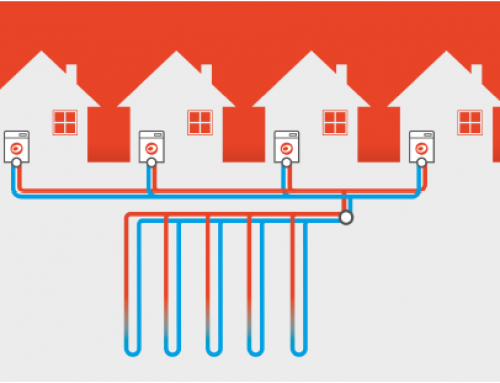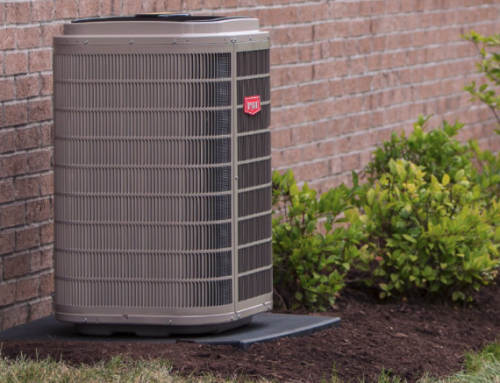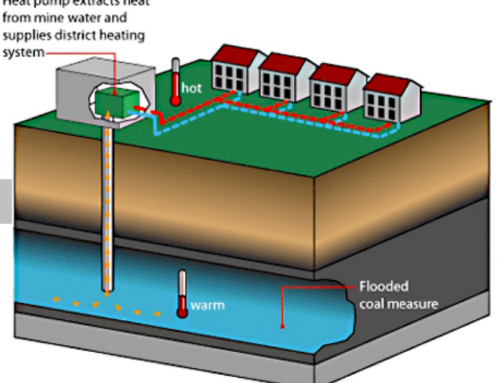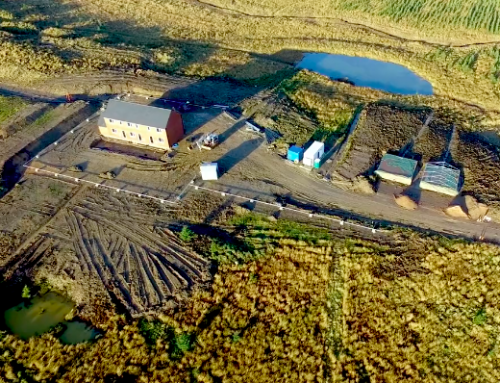By Julian SInger
Heat Wayv is a private UK company developing a system for domestic hot water and space heating using microwave electricity on the same principle as the microwave oven. The company claims that its boilers will be the same size as conventional gas combi-boilers and with a similar fast response time. As a result, there will be no need for either a hot water tank or for alterations when replacing a conventional system.
Such a system offers several advantages over the three other methods of decarbonised heating: hydrogen, heat pumps and electricity. Hydrogen, if it is proved safe, requires complicated changes to the gas networks as well as modification to gas boilers. The cost of producing truly green hydrogen is expected to be large.
Heat pumps are bulky and lose efficiency when producing the high temperatures needed for baths and radiative heating. It is likely that they will require underfloor heating or more radiators to work effectively. Not only will the pump itself take up more space than a gas boiler but it will require an additional installation outside the house or flat and a hot water tank.
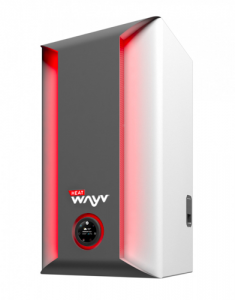
Conventional electrical systems take time to heat water, so hot water must not only be stored in a tank but energy must be spent keeping it hot ready for use. Microwaves also use electricity but, as we know from microwave ovens, they heat water quickly, fast enough that a tank is not needed.
Microwaves are already used to heat flowing liquids, mainly in the food processing industry, for example to pasteurise fruit juices[1]. These are laboratory instruments. The key step towards microwave hot water was taken by the founders of Heat Wayv, Paul Atherton and Phil Stevens, when they developed a portable microwave oven for the army. Conventional ovens use a cavity magnetron to produce the microwaves, but it is too large and heavy to be easily portable. Atherton and Stevens designed a patented semiconductor generator with multiple antennas which is much smaller and lighter.
Heat Wayv has said that its boiler will convert 96 per cent of the input electrical energy into heat, better than the typical 90 per cent for a combi gas boiler. However, Heat Wayv’s number includes some additional features, for example recovering heat from waste bath and sink water, and pipes that are heated by microwaves.
There are other advantages to having an electronic device as the key component of the boiler. It is silent, unlike gas boilers or heat pumps. It is programmable, and can be connected to the internet of things, which means that it can be checked remotely and even operated remotely to take advantage of off-peak electricity prices. Unlike gas boilers and heat pumps it needs no vent so can be placed anywhere in the house.
Heat Wayv is reported to be designing two initial versions. One is the size of a standard combi-boiler, another is double the size. Both include small hot water reserves to help insure immediate hot water response. The company aims to trial the boilers in 2022 and be ready commercially for when gas boilers can no longer be installed in new buildings in 2025.
The main issue will be cost, not so much that of the boiler but the running costs. Hear Wayv’s boiler will do essentially the same work as a gas combi-boiler, but for the same energy the current cost of electricity is about four times that of gas. Unlike a heat pump, which takes well over half of its energy from the air or ground, the microwave boiler uses only electricity. Even allowing for the improvements in efficiency noted above, heating bills will be far higher with the microwave boiler, so much will depend on the future cost of electricity. Present forecasts are that it will not change much.
Heat Wayv is privately financed. However, the management “… has been overwhelmed by the level of interest from people seeking to invest in our company…. We are in the process of establishing a fund that would enable investors to partake… in the development and growth of the company.”
The second last paragraph have been modified from the version first published on 19 May 2021
[1] Advance Microwave Technologies Ltd, www.advancedmicrowavetechnologies.com


